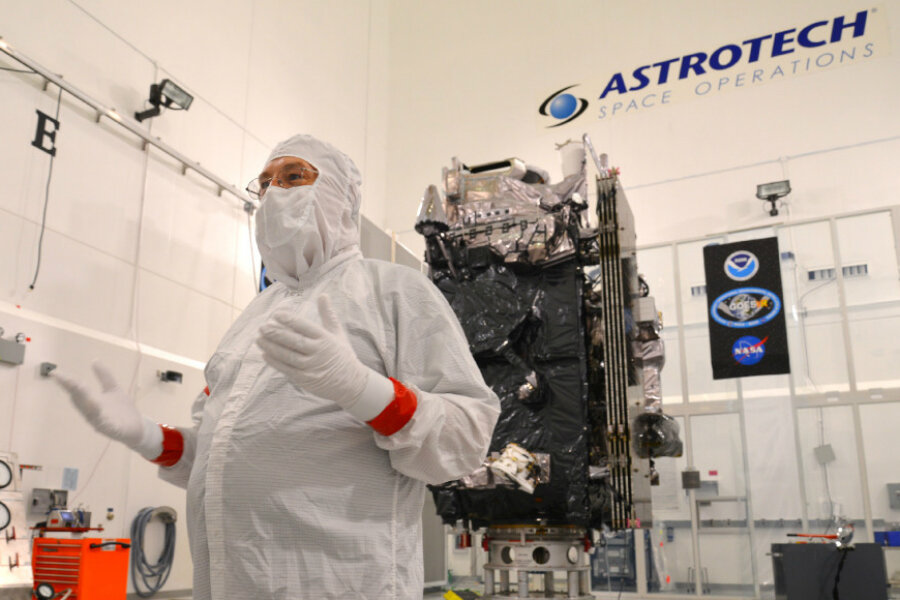Long-term Earth weather forecast: clearer satellite views ahead
Loading...
This weekend, NASA is set to launch the GOES-R weather satellite, the first in a new generation of meteorological satellites operated by the National Oceanic and Atmospheric Administration (NOAA) capable of surveying the entire Western Hemisphere in just five minutes.
Designed to function for 15 years, the satellite will improve long-term weather forecasting, monitor space weather conditions, and provide data to a variety of scientists on the interactions between land, ocean, atmosphere, and climate. While NASA had to reschedule the launch when Hurricane Matthew damaged the launch site, GOES-R is scheduled to launch from the Cape Canaveral Air Force Station on a United Launch Alliance Atlas V rocket Saturday at 5:42 p.m.
“It’s a big deal," said Fred Johnson, a National Weather Service meteorologist in Melbourne, Fla., told USA Today. "It’s a big upgrade from what we’ve had in the past. This should save lives and property."
The GOES-R satellite, which stands for geostationary operational environmental satellite, will be in geosynchronous orbit – meaning that it will remain in the same location 22,000 miles above the equator by orbiting at the same speed at which the Earth rotates. The “R” notates the specific satellite and GOES-S, GOES-T, and GOES-U will all join GOES-R in the sky by 2036.
GOES-R will be equipped with six imaging and data collection instruments, with which the satellite will be able to transmit more data in the first six months of operation than all previous GOES weather satellites since the program started in 1975 combined, according the satellite designer Lockheed Martin.
The Harris Corp. camera on board is a huge advance from the technology aboard the current GOES weather satellites – one expert compared it to going from a black and white image to high definition color. It will be capable of photographing inside the eye of a hurricane, a new perspective that will allow forecasters to measure the intensity and timeline of storms.
“GOES-R will advance environmental monitoring significantly, marking a quantum leap from 1990s technology into the 21st century,” Eric Webster of Harris Corp told USA Today.
Lockheed Martin also designed a "Geostationary Lightning Mapper,” to monitor lightning strikes in North America in order to improve the accuracy of tornado warnings.
Additional instruments will monitor space weather and fluctuations in radiation levels caused by solar flares, which potentially pose a threat to both satellite operation and power grids.
“This is a very exciting time,” Greg Mandt, the NOAA GOES-R program manager, said in a press conference. “This is the culmination of about 15 years of intense work for the great team of NOAA and NASA and our contractors Lockheed Martin and Harris.”







